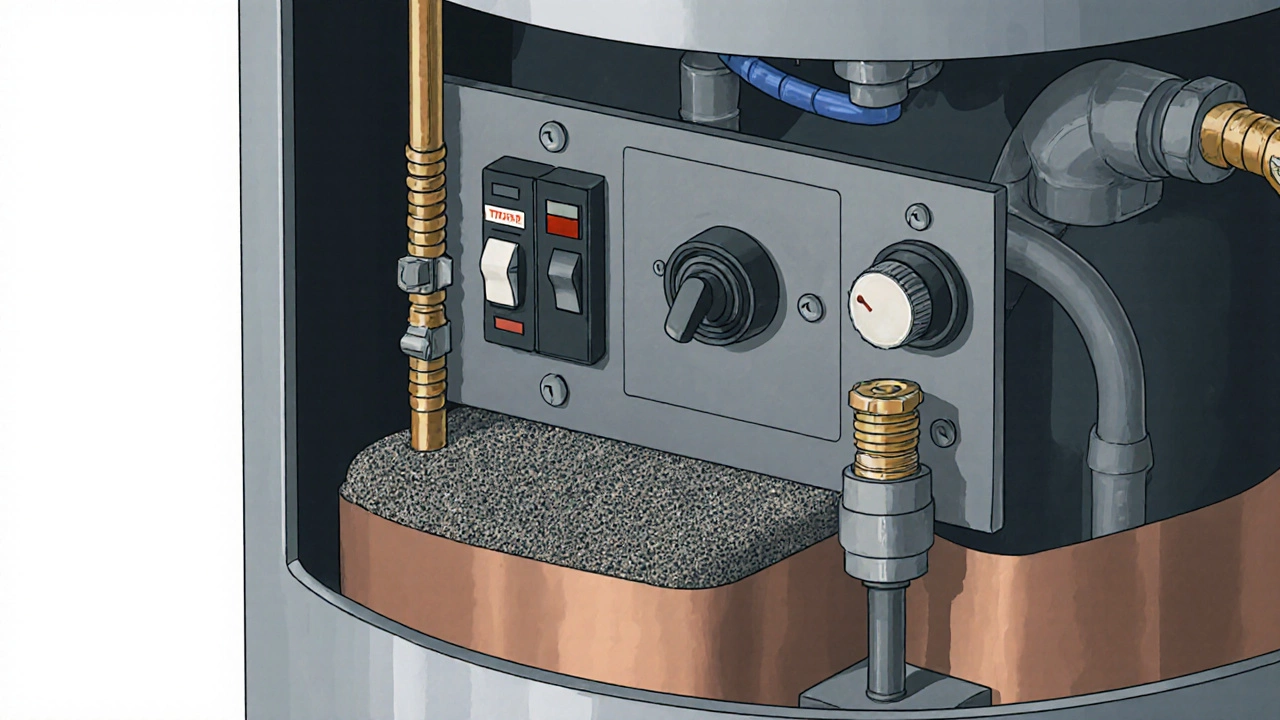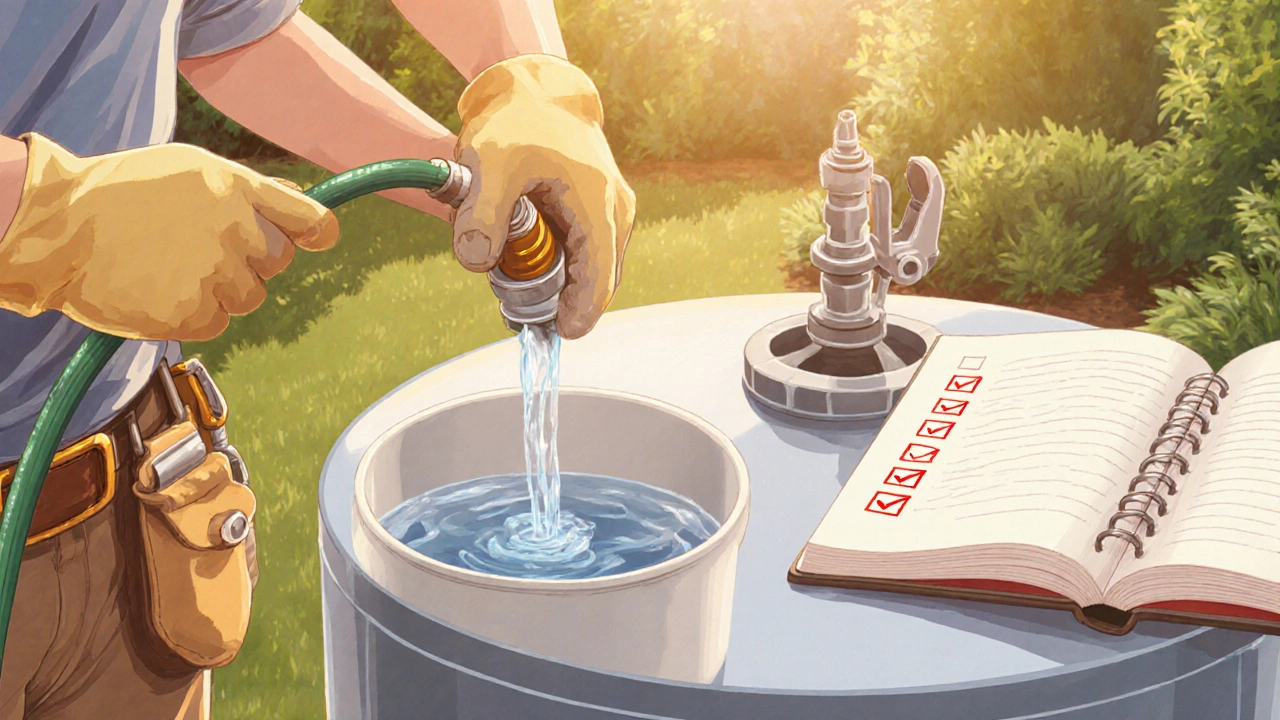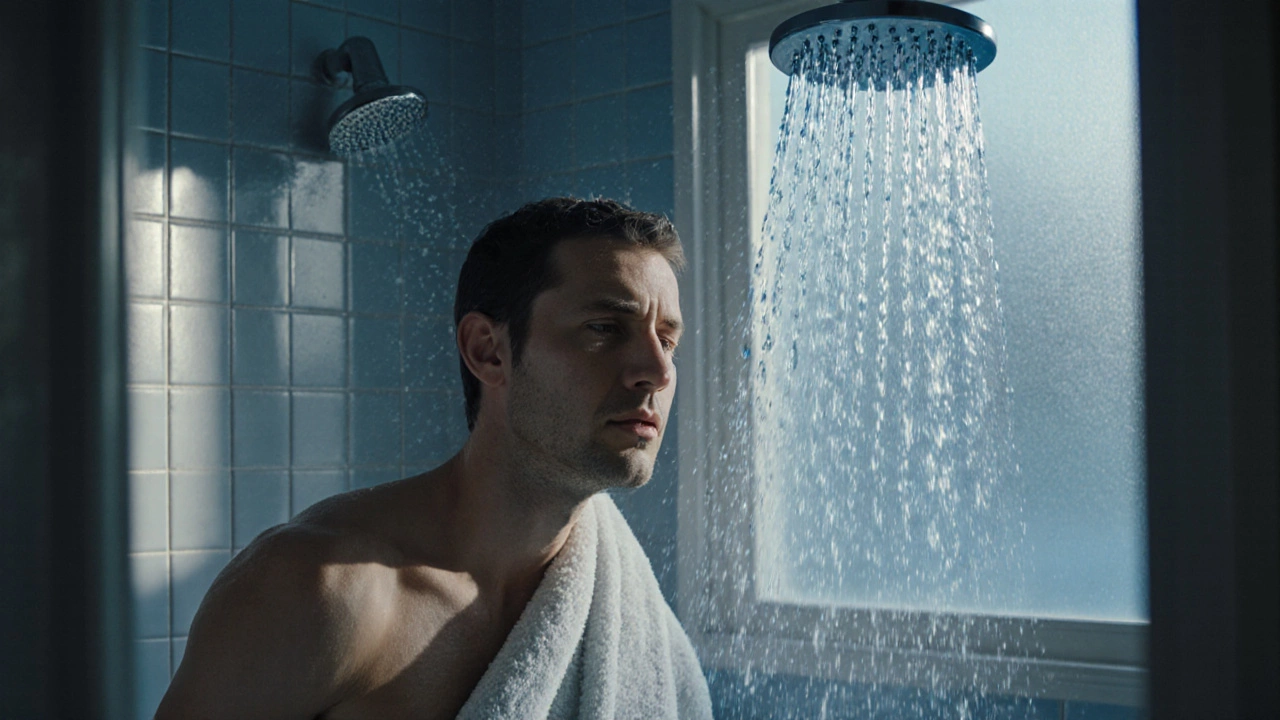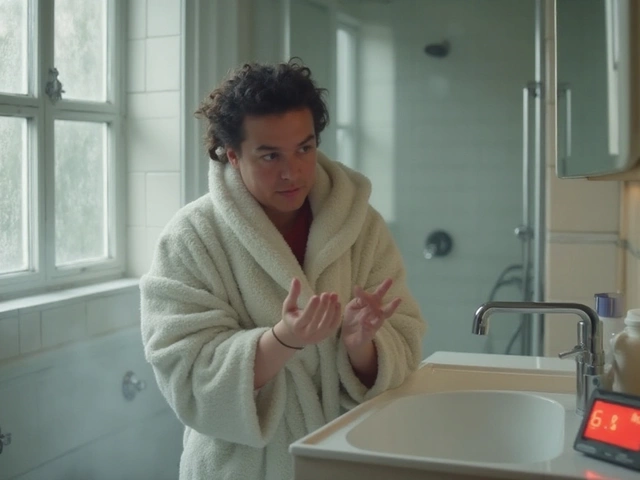Hot Water Troubleshooter
Identify your hot water problem with this step-by-step diagnostic tool. Based on your answers, you'll receive immediate guidance on what's likely causing the issue and how to fix it.
1. What's happening with your hot water?
2. Is there power or gas to your system?
3. Any unusual sounds or leaks?
Key Takeaways
- Check the power or gas supply before opening the panel.
- Look for obvious signs: tripped breaker, error code, or strange noises.
- Most sudden cold‑water problems stem from a single faulty component that you can often reset.
- If basic checks don’t bring back heat, call a qualified engineer - it could be a safety issue.
- Regular flushing and annual servicing keep the system humming.
Waking up to a shower of ice‑cold water is a rude surprise, and you probably want the heat back before the day gets any colder. Below is a down‑to‑earth guide that walks you through the most common culprits and the steps you can take right now, plus a quick cheat‑sheet for when you need a professional.
What’s Really Behind a Sudden Loss of Hot Water?
In the UK most homes rely on either a Water Heater that stores and reheats water for taps and radiators or a combi Boiler that heats water on demand for both heating and domestic supply. When the heat disappears overnight, the fault is usually one of three families:
- Power or fuel interruption - a blown fuse, tripped breaker, or gas valve that won’t open.
- Component failure - a broken thermostat, a stuck pressure‑relief valve, or a burned electric heating element.
- Build‑up or blockage - sediment that insulates the tank, a clogged inlet, or an air‑locked pipe.
Understanding which family you’re dealing with helps you avoid random tinkering and gets you warm water faster.
Step‑by‑Step Diagnosis for the DIY‑Ready Homeowner
Grab a flashlight, a screwdriver, and, if you have one, the system’s user manual. Follow these checks in order - you’ll often spot the problem in the first few minutes.
- Confirm power or gas is on.
- For electric Water Heaters, open the consumer unit and look for a tripped breaker labeled “water heater” or “electric heater”. Flip it back on.
- For gas‑fired Boilers, make sure the gas meter valve is fully open and the pilot light (or electronic ignition) is lit. If the pilot won’t stay lit, the gas supply line or safety thermocouple might be to blame.
- Inspect the thermostat and temperature control.
- The Thermostat senses water temperature and tells the heater when to fire can drift or fail. Check that the dial or digital setting isn’t accidentally set to “eco” or “off”. If the display shows an error code, note it - most manufacturers publish quick fixes online.
- Look for a released pressure‑relief valve.
- The Pressure Relief Valve protects the tank from over‑pressure by venting water has a little lever that pops up when it’s released. If you see water pooling around the valve, it may have tripped, causing the heater to shut down as a safety precaution.
- Check for sediment or scale.
- Hard water areas (many parts of England and Wales) develop Sediment Build‑up a layer of mineral deposits at the bottom of the tank over time. A thick crust can act as insulation, preventing the heating element from reaching the set temperature.
- If the heater makes a rumbling or gurgling sound, that’s a giveaway. A quick flush (see “Quick Fixes” below) often restores heat.
- Verify the expansion tank.
- The Expansion Tank absorbs water volume changes as it heats can become water‑logged. A dead tank raises system pressure, triggering safety cut‑offs.
- Inspect the circuit protection.
- For electric models, a dedicated Fuse/Breaker protects the heating element from overload may have tripped without resetting the main breaker. Reset it manually.

Quick Fixes You Can Try Right Now
If any of the checks above point to a simple issue, try these remedies before calling in an engineer.
- Reset the breaker or fuse. Switch it off, wait 30 seconds, then flip it back on. Some modern units have a reset button on the heater itself - press it and listen for a click.
- Re‑light the pilot. Hold the igniter button while you turn the gas knob to “pilot”. Hold for about a minute after the flame catches, then switch to “on”.
- Flush the tank. Turn off power or gas, attach a garden hose to the drain valve at the bottom, open the valve, and let the water run until it looks clear. Close the valve, refill, and turn the system back on.
- Reset the thermostat. Many digital thermostats have a “reset” pinhole; press with a paperclip and re‑set your desired temperature.
- Release a stuck pressure valve. Gently lift the valve lever. If water streams out, let it run for a minute and then reseat the valve securely.
Most of these actions take under 20 minutes and often bring the heat back.
When It’s Time to Call a Professional
If you’ve run through the list and the water is still ice‑cold, schedule a qualified engineer. Here’s what usually triggers a professional visit:
- Repeated tripping of the breaker or gas safety valve.
- Visible corrosion, rust, or severe leakage around the tank or pipework.
- Unusual noises such as grinding, high‑pitched whine, or loud bangs.
- Any error codes you can’t decipher or that persist after a reset.
In the UK, a Gas Safe registered engineer must handle gas‑related work. For electric units, look for an electrician with experience on domestic water‑heating appliances.

Preventive Maintenance Checklist (Annual)
Keeping a schedule reduces the odds of a sudden cold‑shower emergency.
| Task | Why It Matters | How Often |
|---|---|---|
| Flush the tank | Removes sediment that blocks heat transfer | Every 12 months |
| Inspect the pressure relief valve | Ensures safety cut‑off works | Every 12 months |
| Check thermostat calibration | Prevents false‑low temperature readings | Every 12 months |
| Test the expansion tank | Prevents pressure build‑up that can shut the system | Every 12 months |
| Inspect electrical connections | Reduces risk of breaker trips or fire | Every 12 months |
Mark the date in your diary - a quick 30‑minute service now saves a full‑day cold shower later.
Frequently Asked Questions
Why does my hot water stop after a few showers?
A partially clogged inlet or a failing thermostat can cause the unit to overheat and shut off for safety. Flushing the system and resetting the thermostat usually solves the issue.
Can I replace a faulty pressure relief valve myself?
Yes, if you turn off the water supply, relieve pressure, and follow the manufacturer’s instructions. However, if the valve repeatedly trips, call a professional as it may signal a larger pressure problem.
What temperature should my hot water be set at?
In the UK, 60°C (140°F) is the recommended setting - hot enough to kill bacteria but not so high that it burns the skin.
Is a noisy heater a sign of something serious?
Noise often means sediment is vibrating against the heating element. Flushing the tank usually quiets it. Persistent grinding could indicate a failing element that needs replacement.
Why does my boiler show an error code but still heat the radiators?
Many combi boilers have separate circuits for central heating and domestic hot water. An error code may relate only to the domestic hot‑water circuit while the heating loop continues to work.




